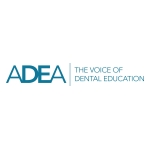WASHINGTON–(BUSINESS WIRE)–#accesstocare–The COVID-19 pandemic has accelerated and broadened the use of teledentistry, offering new promise in the ability to reach vulnerable populations in the greatest need of oral health care, according to a policy research report from the American Dental Education Association (ADEA).
At the same time, the report—“Teledentistry: Innovation to Improving Access and Delivery to Oral Health Care Services in Dental Education”—said dental education is key to fully realizing that potential because of the need to train future dentists on the latest in teledentistry models and processes.
“Health delivery systems, oral health stakeholders and policymakers have a critical role in ensuring teledentistry’s parity is achieved to continue delivering optimal oral health services,” according to the report. “Looking into the future, academic dentistry will be pivotal in educating and training the dentists of tomorrow on teledentistry modalities and offering a new perspective on the delivery of oral health care.”
The report notes that the use of teledentistry by dental schools and programs preceded the pandemic and its application grew once the pandemic hit.
For example, the University of the Pacific, Arthur A. Dugoni School of Dentistry in San Francisco launched in 2010 a “Virtual Dental Home” to address the oral health needs of low-income households in California. During the pandemic, the school dived deeper into teledentistry, using it across academic specialty dental and dental hygiene departments for consultations with patients and other needs.
In a similar vein, the University of Minnesota School of Dentistry had established a teledentistry network in 2004 linking university specialists to dentists and patients in remote rural areas. During the pandemic, the school expanded its partnership with community health centers for the delivery of oral health care services.
The report pointed out that education and training in the application of teledentistry vary by dental school and program. Additionally, there are no Commission on Dental Accreditation or Liaison Committee on Medical Education standards that address teledentistry or telehealth.
Further, there are varying opinions in the dental education profession on whether dental schools should incorporate teledentistry into the curricula due to concerns over factors such as associated financial costs, already overcrowded curriculum and faculty shortages.
Still, the report concludes that if teledentistry is to realize its full potential, dental education must thoroughly integrate it somehow into both didactic learning and clinical simulations.
“While a lecture course in teledentistry would inform and educate the student, the experience of clinical application prepares the student to employ teledentistry in their future practice,” reads the report.
The report’s authors are ADEA staff members Omar A. Escontriás, Dr.P.H., M.P.H., Senior Director of Policy Research; Chelsea Skovran, M.P.A., Senior Administrative Associate; and Denice C. L. Stewart, D.D.S., M.H.S.A., Chief Policy Officer.
The teledentistry publication is the latest in a regular series of policy research reports published by ADEA’s Office of Policy and Education Research.
About ADEA: The American Dental Education Association (ADEA) is The Voice of Dental Education. Our mission is to lead and support the health professions community in preparing future-ready oral health professionals. Our members include all 78 U.S. and Canadian dental schools, more than 800 allied and advanced dental education programs, more than 50 corporations and approximately 18,000 individuals. Our activities encompass a wide range of research, advocacy, faculty development, meetings and communications, including the esteemed Journal of Dental Education®, as well as the dental school application services ADEA AADSAS®, ADEA PASS®, ADEA DHCAS® and ADEA CAAPID®. For more information, visit adea.org.
Contacts
Kellie Bove
bovek@adea.org
202-513-1172

